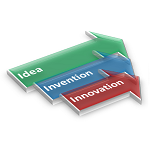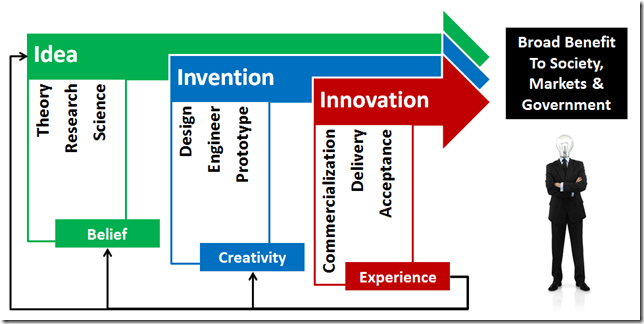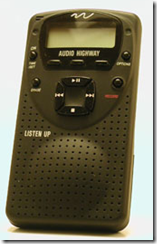 The Word of the Decade is,… Innovation or Innovation Continuum. It’s popularity is demonstrated by 407,000,000 internet results reported by Google in 0.13 seconds. Let’s ponder what innovation really is by definition and begin to classify a continuum of innovation. Nothing too radical, just something to consider in terms of language hyperbole.
The Word of the Decade is,… Innovation or Innovation Continuum. It’s popularity is demonstrated by 407,000,000 internet results reported by Google in 0.13 seconds. Let’s ponder what innovation really is by definition and begin to classify a continuum of innovation. Nothing too radical, just something to consider in terms of language hyperbole.
Overuse – Innovation Continuum
Clearly, the word is the sword of language today. You find it used to embellish the relevant importance of concepts, activities, facts, fiction, results and points of view. It can be easily found in blog posts, product descriptions, websites, résumés, Google+ profiles, corporate mission statements, government official’s speeches, the newspaper and so on. There are even several local, national, and global innovation awards for outstanding innovation – usually for things or products.
Of course, the word innovation has also been misused to describe many things that may not be innovation at all.
Definition
Consider the following definition found on dictionary.com.
- “something new or different introduced: numerous innovations in the high-school curriculum.” Or my example: That new product is the best innovation of the year.
- “the act of innovating; introduction of new things or methods.” My example:
He drew upon innovation in his approach to advance his research.
Wikipedia defines innovation: “Innovation is the creation of better or more effective products, processes, services, technologies, or ideas that are accepted by markets, governments, and society. Innovation differs from invention in that innovation refers to the use of a new idea or method, whereas invention refers more directly to the creation of the idea or method itself.”
I like the Wikipedia definition, for three reasons. First, it differentiates innovation from invention. Second, it points out that innovation is not limited to just “products” or things, but can be a better process, service, technology or idea – all somewhat less tangible, and perhaps less likely to be recognized as “innovation.” And third, it clarifies that innovation must have value in terms of acceptance by markets, governments, and/or society. An innovation is not innovation if it is for the sake of, or is false, innovation.
Continuum
It may be time to step back, and ensure we look at innovation for what it really is. So many authors have defined this – but we lose track in day to day colloquial use of the word. I propose the following continuum:
- Idea – theory, research, science
- Invention – design, engineer, prototype
- Innovation – commercialization, delivery, acceptance
My reasoning is that innovation as a context can apply across all steps in the continuum, And, for the thing going through the process continuum, it doesn’t become an innovation until it is commercialized, delivered and accepted to be fit for the purpose it was designed.
 One can easily see that this is a circular continuum. Once an innovation is accepted by users, experience builds and the opportunity to suggest new ideas for improvement start the cycle all over again. Many times, the cycle is started by adding creative new elements to the current invention – sometimes called continuous innovation. Other times, our beliefs are challenged and heretofore impossibilities become possible and that drives drives a radical innovation. Still other times, experience causes us to throw out the current foundational beliefs, and the current generation of creativity and invention by the introduction of a disruptive new idea as a result of scientific breakthroughs, which in turn, begat new creativity and disruptive innovation.
One can easily see that this is a circular continuum. Once an innovation is accepted by users, experience builds and the opportunity to suggest new ideas for improvement start the cycle all over again. Many times, the cycle is started by adding creative new elements to the current invention – sometimes called continuous innovation. Other times, our beliefs are challenged and heretofore impossibilities become possible and that drives drives a radical innovation. Still other times, experience causes us to throw out the current foundational beliefs, and the current generation of creativity and invention by the introduction of a disruptive new idea as a result of scientific breakthroughs, which in turn, begat new creativity and disruptive innovation.
Something to Ponder
If innovation is all that Wikipedia, the dictionary and my suggestions here have shared, why, as a word, is it used to describe just about everything? That is, just about anything, based on subjective suggestion that something it describes has been accepted by markets, governments and or society? Can so many things really be innovation? or are we better off reserving the use of that word for things that really deliver on the three tests:
- Is it a better or more efficient product, process, service, technology or idea?
- Does it really provide value and benefit to markets, society and/or government?
- Is it more than an invention, in terms of its commercial value?
Innovation or Invention?
Consider this thought: MP3 players existed well before the iPod and iTunes were successfully accepted by the market.
 Could one say, then, that MP3 players, were a great invention, but it was the iPod that was the innovation? Hard to say. According to Wikipedia, the Listen Up player from Audio Highway (pictured at the left) won an “Innovations Award” at the Consumer Electronics Show in January of 1997.
Could one say, then, that MP3 players, were a great invention, but it was the iPod that was the innovation? Hard to say. According to Wikipedia, the Listen Up player from Audio Highway (pictured at the left) won an “Innovations Award” at the Consumer Electronics Show in January of 1997.
Many companies, not just Apple, have been openly accused, if not indicted, for “democratizing” a pre-existing invention/innovation. Microsoft, Oracle, and so on fall in this category, as well as many others.
I don’t know the answer to the MP3 player vs. iPod question, I just ask you to consider it. Clearly, the lines are fuzzy, if not downright blurry and open to interpretation.
Going Forward
Let’s use this great and powerful word, but lets try to use it when it really adds meaning to what we are saying. I don’t think, for example, that my two dogs are an innovation, nor do they ever do an act of innovation. That’s an extreme case, but not every new product is an innovation. In fact, most products that are not coming from a marketplace leader, are only delivering competitive parity by adding features that others already have.
Ironically, Google also reports that the word OMG, the hyperbolic acronym for “oh my gosh!” is found 407,000,000 times. That’s precisely the same result that Google reports for use on the internet, as innovation! Can it be that the two have reached that same level of common, ordinary conversational use? I really don’t think so. An innovation is something uncommon special, something really great.
Can we all just use the word a little less? So when we do, it has more meaning? Let’s try to use the word “innovation” when we really have something remarkable to classify as innovation, and use ordinary words to describe the common.
Extra Credit
What conclusions can you draw from the following data. Do the numbers make sense? These numbers reflect Google’s report for results on 28 February 2012. The number to the right of the keyword is what Google reports for the number of times the word occurs on the internet. I suggest that this is an indirect measure of the word’s relative use.
| Idea | 1,980,000,000 |
| Theory | 640,000,000 |
| Research | 2,580,000,000 |
| Science | 2,310,000,000 |
| Invention | 132,000,000 |
| Design | 5,670,000,000 |
| Engineer | 85,500,000 |
| Prototype | 216,000,000 |
| Innovation | 407,000,000 |
| Commercialization | 14,900,000 |
| Delivery | 2,450,000,000 |
| Acceptance | 348,000,000 |
Diagrams credit: me and my Powerpoint skills.
Picture Credit: Kris Beldin, now in the public domain on Wikimedia Commons.










Thank you Andrew for an important discussion! Awareness regarding the power (or lack of power due to overuse or misuse)and specificity of our choices of words makes for effective communication.
Hmmm. Reminds me of how abused the word ‘paradigm’ became in the late 90s. Used about as frequently as 4-letter words in casual conversation.
Good point! Google reports:
“66,100,000 results (0.13 seconds)” for the keyword “paradigm.” Seems that it’s use has now fallen back to a reasonable level.